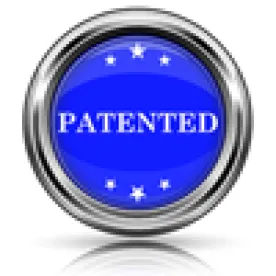In its Final Written Decision, the Board concluded that Petitioner has shown by a preponderance of the evidence that claims 1, 3-5, and 10-13 of the ’340 patent are unpatentable. The Board stated that the ’340 patent relates “to drugs formulated as unit oral dosage forms by incorporating them into matrices formed of a combination of poly(ethylene oxide) (“PEO”) and hydroxypropyl methylcellulose (“HPMC”).
In the Board’s Decision on Institution, it construed three terms, none of which were disputed by either party. Accordingly, the Board incorporated its previous analysis for purposes of this decision. Also, the Board agreed with Petitioner’s contention that a person of ordinary skill in the art at the time of the ’340 patent would have “a Bachelor’s degree in chemistry or a similar discipline, and at least several years of work experience in the design and/or development of controlled release oral drug dosage forms.”
Turning to the alleged obviousness grounds, the Board first assessed Petitioner’s allegation that claims 1, 3-5, and 10-13 are obvious in view of the Shell 1998 Publication. Patent Owner argued that although the Shell 1998 Publication discloses the use of both PEO and HPMC alone, it does not disclose, teach, or suggest the combination of PEO and HPMC. Petitioner explains that the Shell 1998 Publication discloses polymeric matrices made from combinations of PEO and hydroxyethyl cellulose and lists hydroxyethyl cellulose and HPMC as two “[p]articularly preferred alkyl-substituted celluloses” that can be used in the polymeric matrices. Petitioner further supports its position that it would have been obvious with the declaration of Dr. Clive Wilson.
Patent Owner “argues that (1) the overwhelming majority of polymeric matrices taught by the Shell 1998 Publication are made of just one polymer, and (2) the combinations taught by the Shell 1998 Publication all use xantham gum or hydroxyethyl cellulose because these polymer combinations ‘provide a more controlled release of the drug than their components when used individually.’” Also, Patent Owner notes that the Shell 1998 Publication does not include PEO and HPMC on a short list of polymers that could be combined to form a polymeric matrix.
The Board was not persuaded because “[a] combination would have been obvious under § 103 if ‘there are a finite number of identified, predictable solutions’ to a known problem and when a path has been identified that ‘leads to the anticipated success, it is likely the product not of innovation but of ordinary skill and common sense.’” Accordingly, the Board agreed with Petitioner that it would have been obvious to form a polymer matrix from a combination of PEO and HPMC, because the two polymers are disclosed in a short list of polymers and the reference discloses that polymers can be combined to form a polymeric matrix. The Board also determined that the Shell 1998 Publication rendered dependent claims 3-5 and 11-13 obvious. However, the Board determined that the Shell 1998 Publication fails to teach or suggest the recited limitations of dependent claim 10, because Petitioner failed to provide an explanation of how the Shell 1998 Publication renders the specific PEO:HPMC weight ratios set forth in dependent claim 10 obvious.
The Board further found that Petitioner had shown by a preponderance of the evidence that claims 1, 3-5, and 10-13 are obvious over the combination of the Shell 1998 Publication and Papadimitriou for similar reasons. However, the Board did not find that Petitioner had shown by a preponderance of the evidence that a person of ordinary skill in the art would have had a reason to combine Edgren and Papadimitriou, because Petitioner had not explained persuasively how or why a person of ordinary skill in the art would have exchanged one of the HPMCs in the Edgren formulation with PEO in the formulation of Papdimitriou.
Next, the Board assessed the secondary indicia provided by Patent Owner. The Board determined that Patent Owner had not shown sufficiently in its Patent Owner Response a nexus between the elements of the claim and the alleged secondary indicia. Specifically, the Board determined that merely citing to a claim chart that allegedly compares the commercial product to each and every limitation of the claims, without any explanation in the Patent Owner Response, is insufficient to demonstrate a nexus and violates the rule against incorporation by reference. Similarly, the Board found a lack of nexus between the licenses cited by Patent Owner and the claimed invention, because there was no evidence that the licensing program was successful because of the merits of the claimed invention. With regard to alleged long-felt need, Patent Owner failed to offer any evidence that others tried and failed.
Next, the Board assessed the Motion to Exclude filed by both parties and the Motion for Observations. The Board denied each of the Motions to Exclude because the Board is capable of determining and assigning the appropriate weigh to the evidence. The Board did not decide Patent Owner’s Motion for Observations, because its analysis did not rely upon the information, and thus the Motion was moot.
Endo Pharmaceuticals, Inc. v. Depomed, Inc., IPR2014-00652
Paper 68: Final Written Decision
Dated: September 16, 2015
Patent 6,723,340 B2
Before: Grace Karaffa Obermann, Georgianna W. Braden, and Tina E. Hulse
Written by: Braden
Related proceedings: Depomed, Inc. v. Actavis Elizabeth LLC, 3:12-cv-01358-JAP-TJB (D.N.J.); Depomed, Inc. v. Endo Pharms., Inc., 3:13-cv-02467-JAP-TJB (D.N.J.); Depomed, Inc. v. Purdue Pharma, L.P., 3:13-cv-00571-JAP-TJB (D.N.J.); Depomed, Inc. v. Zydus Pharm. (USA), Inc., 3:12-cv-02813-JAP-TJB (D.N.J.); Depomed, Inc. v. Sun Pharma Global FZE, 3:11-cv-03553-JAP-TJB (D.N.J.); Depomed, Inc. v. Impax Labs., Inc., 3:12-cv-02154-JAP-TJB (D.N.J.); Depomed, Inc. v. Lupin Pharms., Inc., 4:09-cv-05587-JAP-TJB (D.N.J.); IPR2014-00651; IPR2014-0653 and IPR2014-00654 (involving U.S. Pat. No. 6,340,475); and IPR2014-00655 and IPR2014-00656 (involving U.S. Pat. No. 6,635,340)



 />i
/>i

